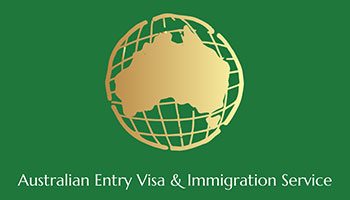
Temporary Skill Shortage (TSS) visa
On 18 April 2017, the Australian Government announced that the Temporary Work (Skilled) visa (subclass 457 visa) will be abolished and replaced with the completely new Temporary Skill Shortage (TSS) visa 482, in March 2018.
There will be three options available under this new TSS visa program:
- Short-term stream – this is for employers to source genuine temporary overseas skilled workers in occupations included on the Short-term Skilled Occupation List (STSOL) for a maximum of two years (or up to four years if an international trade obligation applies).
- Medium-term stream – this is for employers to source highly skilled overseas workers to fill medium-term critical skills in occupations included on the Medium and Long-term Strategic Skills List (MLTSSL) for up to four years, with eligibility to apply for permanent residence after three years.
- Labour Agreement stream – this is for employers to source overseas skilled workers in accordance with a labour agreement with the Commonwealth, on the basis of a demonstrated need that cannot be met in the Australian labour market and standard visa programs are not available, with the capacity to negotiate a permanent residence option.
Subclass 482 – TSS Visa (Temporary Skill Shortage Visa)
The Subclass 482 Temporary Skill Shortage (TSS) visa program replaced the 457 visa program from March 2018.
As described above the TSS Visa (Subclass 482) has a short-term stream and a medium-term stream. Applicants with occupations on the Short-Term Skilled Occupations List (STSOL) are eligible for visas of up to two years (renewable onshore once, for a further two years), whilst those on the Medium and Long-Term Strategic Skills List (MLTSSL) can apply for up to four years (with eligibility for permanent residency after three years, depending on meeting age and English requirements).
How do “YOU” apply for a TSS visa?
There are three steps to the application process.
1 – Standard business sponsorship
A business must become approved as a Standard Business Sponsor in order to employ a TSS visa holder. To obtain a Standard Business Sponsorship agreement, the business must demonstrate lawful and active operation in Australia. This includes identifying the correct ABN to apply under, registering the business name, supplying Business Activity Statements (BAS) and financial statements, as well as showing a commitment to training Australian citizens and permanent residents and compliance with workplace and other Australian laws.
2 – Nomination
Following the SBS application, an employer must nominate a position within their business as one which must be filled by an overseas citizen. As part of this step, there are various requirements to be met:
Labour Market Testing
In order to nominate an employee for a TSS visa, a business must demonstrate that they have a genuine need to do so. This is partly met by providing evidence that the business has conducted labour market testing in the 12 months prior to making a nomination application. Labour market testing might be having unsuccessfully advertised for a role, for example. Evidence of market testing will need to be supplied as part of the application.
Salary Level
The salary for the nominated position must meet two requirements. Firstly, the remuneration must be above the Temporary Skilled Migration Income Threshold (TSMIT). This threshold is set by DIBP each year and is currently $53,900 plus superannuation. Secondly, the proposed salary must be within the market rate for the role. This ensures that the applicant will be paid in line with Australian employees in comparable roles.
Note: Some occupations will be subject to DIBP caveats that set a minimum remuneration level that is above TSMIT.
Training Levy
The introduction of the TSS visa brings with it a new Skilling Australians Fund (SAF) levy to be paid at the nomination stage. The SAF levy will make nominating employees a considerably more expensive undertaking for a business.
The amounts payable per applicant are set out as follows:
- The charge will be calculated according to the number of years for which the visa is required, as set out in the nomination, and will be payable in full at this time.
- A small business (Turnover less than $10M) will pay $1,200 per nomination per year for a TSS visa. A large business will pay $1,800 per nominee per year.
- If the employee is applying for a four-year visa, this will require the four annual payments to be made at the time of application. (For example, if a large business nominates an employee for a four-year TSS visa, this business is liable to pay $7,200 when the nomination is made.)
3 – Visa application
Step three of the process is the visa application itself, at which time the nominee must demonstrate that they meet the requisite skill level for their occupation, as well as health and character requirements.
Some occupations under the 482 visa are subject to caveats. For example:
- Applicant must be paid a higher minimum salary (e.g. $65,000 or $80,000)
- Nominated position must not include lower skill tasks
- Sponsor must be located in a specific postcode
- Sponsor must have at least five full-time employees
- Sponsor must have an annual turnover of at least $1million
Employers planning to sponsor workers will need to become an approved ‘standard business sponsor’.
We can assist applicants and employers by managing the TSS visa application process from start to finish, liaising with the Department of Immigration and Border Protection and ensuring the application has the best possible chance of success.
For more information, see the Department of Immigration and Border Protection’s recently issued fact sheet (PDF) and media release.
SKILLED MIGRATION SUB CLASSES
The skill stream of Australia’s migration programme is specifically designed to target migrants who have skills or outstanding abilities that will contribute to the Australian economy.
The migration to Australia of skilled people with the qualifications and attributes to succeed helps address specific skill shortages in Australia and enhances the size and skill level of the Australian labour force.
There are a variety of skilled migration options:
Skilled Independent Subclass 189
This visa is a Permanent visa option, the skilled independent subclass 189 does not require sponsorship by a relative or state/territory government.
To be eligible the applicant must meet the following criteria.
- Lodge an expression of interest (EOI) with a relevant authority and be invited to apply.
- Meet the pass mark in the skilled migration points test – currently 60 (points are award for things like education, language ability etc).
- Be aged between 18 and 44 inclusive.
- Pass Skills Assessment in an occupation on the Occupations List for Skilled Independent visas (skills are assessed with a relevant Australian authority).
- Have Competent English or higher.
- Meet health and character requirements.
Skilled Nominated Subclass 190
A permanent visa requiring nomination by an Australian State or Territory government .
To be eligible for a Subclass 190 visa, you would need to:
- Lodge an EOI and be invited to apply.
- Be nominated by a State or Territory Government.
- Meet the pass mark in the skilled migration points test – currently 60.
- Be aged between 18 and 44 inclusive.
- Pass Skills Assessment in an occupation on the State/Territory Nominated Occupations List.
- Have Competent English or higher.
- Meet health and character requirements.
Skilled Regional Provisional Subclass 489
This is a 4-year provisional visa which allows holders to live only in certain areas of Australia. You would need to be sponsored by an Australian relative living in a designated area, or by a state or territory government.
In order to qualify for a Subclass 489 visa, you would need to:
- Lodge an EOI and be invited to apply.
- Be sponsored by a relative living in a Designated Area or nominated by a State or Territory Government.
- Meet the pass mark in the skilled migration points test – currently 60.
- Be aged between 18 and 44 inclusive.
- Pass Skills Assessment in an occupation on the relevant Skilled Occupations List.
- Have Competent English or higher.
- Meet health and character requirements.
Skilled Regional Subclass 887
The Skilled Regional visa is the permanent stage of the Skilled Regional Provisional visa. To qualify for a Skilled Regional visa, you must live in the required region of Australia for 2 years and work full time there for 12 months.
The Skilled Regional visa – 887 is the second stage visa giving permanent residence to holders of Skilled Regional Provisional visas such as:
- Skilled Regional (Provisional) Subclass 489.
- Skilled Regional Sponsored Subclasses 475 and 487.
- Skilled Designated Area Sponsored Subclass 496.
- Skilled Independent Regional Subclass 495.
It does not require sponsorship by an Australian relative or nomination by a state or territory government.
Graduate Temporary Subclass 485
The Graduate Temporary visa is a work visa which can be applied for by international students who have completed a qualification taking 2 years of study in Australia.
Duration of the Post Study Work Stream PSWV visa depends on which qualification has been completed in Australia as follows:
- 2 years: completion of Bachelor Degree, Bachelor with Honours, Masters by Coursework or Masters (Extended).
- 3 years: Masters by Research.
- 4 years: Doctorate.
Whilst on a 485 visa, you have unrestricted work rights in Australia.
Recognised Graduate Subclass 476
The Skilled – Recognised Graduate subclass 476 visa is an 18-month work visa for recent engineering graduates.
You must have completed a qualification at most 2 years prior to lodgement. The qualification must be:
- In the engineering field.
- At the bachelor level or higher.
- Completed at an institution which offers courses accredited by the Washington Accord, or an institution specified by Immigration.
Following a personalised assessment, we will evaluate your options on a case by case basis so that we assure that you apply for the visa that is right for you.

